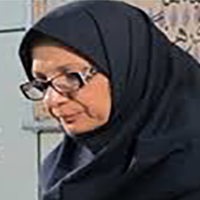Mithraic and Zoroastrian Motifs in Nizami's Haft Paikar (Seven Beauties)
Author(s):
Abstract:
Mithraism and Zoroastrianism، the ancient Iranian religions، are rooted in the culture of this country; consequently، their reflections are vividly evident in Persian literature. The prominent Iranian poet Nizami Ganjavi utilized these cults allegorically and symbolically in his two prominent versified stories of Haft Paikar، and Khosro and Shirin. This paper aims at discussing the primary samples of allegorical and symbolic uses in Nizami’s Haft Paikar، a number of which are as follows: Bahram in his multiple aspects as the name of a deity in Mithraism and a king in Zoroastrianism; the frequent use of Gonbad standing for the fire temple in the story; Seven Palaces for seven Princesses; seven as a significant number in Mithraism and Zoroastrianism; the comparison of the seven princesses’ portraits on the Khovarnagh palace ceiling with the seven stars on Mithraic temples; and finally an analogy between Bahram’s passage from the first Gonbad to the seventh in Nizami’s story with the initiation rituals of going through seven steps in Mithraic tradition
Keywords:
Language:
Persian
Published:
Journal of Literary Studies, Volume:45 Issue: 1, 2012
Page:
95
https://magiran.com/p1046209
مقالات دیگری از این نویسنده (گان)
-
Cultural Identity and the Comparative Study of Text and Image in the Lithographed Manuscript of Amir Arsalan Namdar
Mahmonir Shirazi *, Maryam Hoseini
Literary Text Research, -
The Analytical Study of Hagiographies in Khorasan and Qumis Regions from the 4th to the 8th Century AH
Maryam Rajabinia *,
Mystical Literature,



